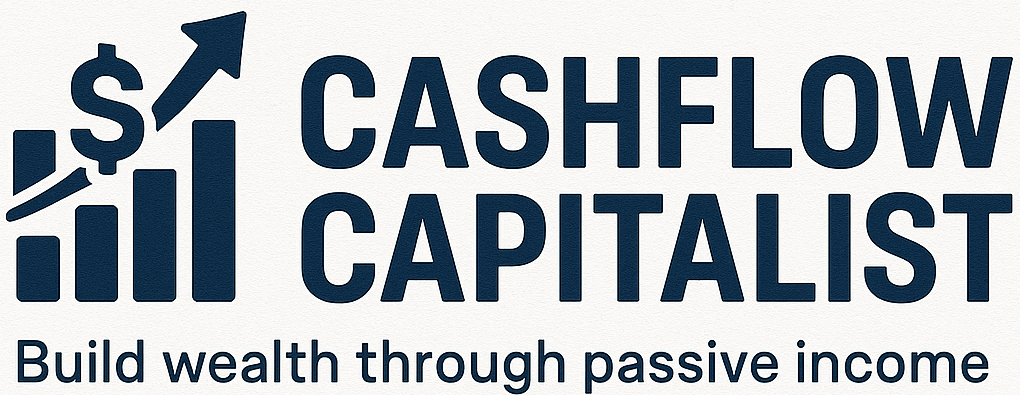Why You Should Reinvest Dividends Automatically: The Power of Compounding Your Wealth
Investors aiming to grow their wealth can greatly benefit from reinvesting dividends automatically. A dividend reinvestment plan (DRIP) lets you use compounding to turn regular income into big gains over time.

Reinvesting dividends buys more shares, starting a snowball effect for big returns later. For Canadians, using a DRIP with companies like Royal Bank of Canada is smart. Our guide on the power of DRIPs shows how.
Key Takeaways
- Reinvesting dividends can lead to significant long-term wealth accumulation.
- DRIPs allow investors to purchase fractional shares and benefit from dollar-cost averaging.
- Compounding returns can result in exponential growth over time.
- Canadian companies offer robust DRIP programs that can help investors grow their portfolios.
- Starting early with DRIPs can lead to substantial returns due to the power of compounding.
The Fundamentals of Dividend Reinvestment
Dividend Reinvestment Plans (DRIPs) are a great way to grow your wealth. They work by automatically adding your dividends to more shares of the same stock. This helps your money grow faster over time.
What Are Dividend Reinvestment Plans (DRIPs)?
A Dividend Reinvestment Plan (DRIP) lets you automatically add your dividends to more shares. This makes investing easier, as you don’t have to do it yourself.

How Automatic Reinvestment Differs from Cash Dividends
Getting cash dividends means you get the money directly. But with DRIPs, your money buys more shares. This makes your investment grow faster. For more on dividend investing, check out this beginner’s guide.
Types of DRIPs in the Canadian Market
In Canada, there are two main kinds of DRIPs: Synthetic DRIPs and Full DRIPs.
Synthetic DRIPs Through Brokerages
Synthetic DRIPs are offered by brokerages. They mimic the DRIP process by adding dividends to your investments. This option is flexible and can be managed through your brokerage account.
Full DRIPs Directly Through Companies
Full DRIPs are managed by the companies themselves. They let you add dividends directly to the company’s stock. This often comes with perks like cheaper shares or no fees.
Why You Should Reinvest Dividends Automatically
Reinvesting dividends can help your wealth grow faster. This method involves putting dividend payments back into the same stock or fund. It uses the power of compounding for long-term growth.

Harnessing the Power of Compounding
Compounding is a key financial idea. It means your investment earnings earn more money over time. By reinvesting dividends, you speed up this process.
Key benefits of compounding include:
- Accelerated growth of investment over time
- Increased chance of building long-term wealth
- Higher returns from reinvesting dividends
Dollar-Cost Averaging Benefits
Reinvesting dividends helps with dollar-cost averaging. This strategy smooths out market ups and downs. By investing a set amount regularly, you can buy more shares over time, leading to better returns.
“Dollar-cost averaging is a disciplined investment strategy that helps investors navigate market fluctuations by investing a fixed amount of money at regular intervals, regardless of the market’s performance.”
Portfolio Expansion Without Additional Effort
Automatic dividend reinvestment makes expanding your portfolio easy. As dividends are reinvested, they buy more shares. This increases your stake in the company.
For example, investing in top Canadian dividend stocks can boost your returns over time.
Reducing Emotional Investment Decisions
Automatic dividend reinvestment also reduces emotional decisions. It takes the guesswork out of when to reinvest. This disciplined approach leads to more consistent results.
The emotional aspect of investing is a big challenge for many. Automating reinvestment helps focus on long-term goals.
The Mathematics of Dividend Compounding
Dividend compounding is a powerful way to grow wealth over time. It shows how reinvested dividends can greatly increase investment returns.
How Compounding Accelerates Wealth Growth
Compounding makes investments grow faster. When dividends are reinvested, they buy more shares. These shares then earn more dividends. This creates a cycle where wealth grows very quickly over time.

The Dividend Snowball Effect
The dividend snowball effect is when the first investment earns dividends. These dividends, when reinvested, start a snowball effect. This effect gets stronger over time, making long-term investments very powerful.
Calculating Your Potencial Returns
To see the power of dividend compounding, investors can use different tools. Two main tools are calculating the Compound Annual Growth Rate (CAGR) and using dividend reinvestment calculators.
Compound Annual Growth Rate (CAGR)
CAGR shows the investment return over a certain period. It helps investors see how their investments are growing, smoothing out the returns.
Using Dividend Reinvestment Calculators
Dividend reinvestment calculators are online tools. They let investors put in their initial investment, expected dividend yield, and other details. These calculators show the future value of the investment, helping investors see the long-term benefits of reinvesting dividends.
By understanding and using the math of dividend compounding, investors can make better choices. This can lead to big gains over the long term.
Real-World Examples of Dividend Reinvestment Success
The power of dividend reinvestment is best shown through real examples. Investors who use dividend reinvestment plans (DRIPs) see big growth in their portfolios over time.
Case Study: Reinvested vs. Non-Reinvested Portfolio Over 20 Years
An investor owns 1,000 shares of a stock at USD 20 each, with an annual dividend of USD 1. The USD 1,000 dividend is reinvested, buying 50 more shares. Over 20 years, the reinvested portfolio grows much more than the non-reinvested one. This shows the long-term benefits of DRIPs.

Canadian Blue-Chip Companies and Their DRIP Performance
Canadian blue-chip companies are known for stable dividends, making them great for DRIPs. Their DRIP performance, mainly in banking and utilities, has been impressive.
Banking Sector Examples
Big Canadian banks like Royal Bank of Canada (RY) and Toronto-Dominion Bank (TD) always pay dividends. Their DRIPs have done well, with steady dividend growth. For example, RY has raised its dividend for many years, helping investors who reinvest their dividends.
Utility Sector Examples
Utility companies like Fortis Inc. (FTS) and Emera Incorporated (EMA) have stable cash flows and regular dividends. They have shown strong DRIP performance, giving investors reliable returns through dividend reinvestment.
The Impact of Reinvestment Frequency on Returns
How often you reinvest dividends can greatly affect your returns. More frequent reinvestment can lead to higher returns because of compounding. Investors should think about reinvestment frequency when setting up their DRIPs to get the most returns.
Tax Efficiency of Dividend Reinvestment in Canada
In Canada, the tax efficiency of dividend reinvestment is key for investors wanting to boost their returns. By reinvesting dividends in tax-advantaged accounts, investors can cut down on taxes. This helps increase their overall earnings.
TFSA Dividend Reinvestment Benefits
Investors can grow their wealth without taxes when they reinvest dividends in a Tax-Free Savings Account (TFSA). TFSA dividend reinvestment is great because it lets investors build their wealth without paying taxes on the income.
RRSP Dividend Reinvestment Advantages
Registered Retirement Savings Plans (RRSPs) also have tax perks for dividend reinvestment. You can deduct RRSP contributions from your taxes. The income from your investments, including dividends, grows without taxes until you withdraw it.
Tax Considerations for Non-Registered Accounts
For non-registered accounts, the tax on dividend income is a big deal. Dividend tax credits can lessen the tax hit. But, it’s important to keep track of the adjusted cost base to avoid tax problems when selling securities.
Dividend Tax Credit Implications
The dividend tax credit can lower the tax rate on dividend income. It’s important for investors to understand the gross-up and tax credit rules. This helps them get the most tax benefit.
Adjusted Cost Base Tracking
Keeping an accurate record of the adjusted cost base is vital for non-registered accounts. It makes sure capital gains are calculated right when you sell securities.

How to Set Up Automatic Dividend Reinvestment
Setting up automatic dividend reinvestment is easy and can boost your returns over time. Many Canadian brokerages offer this option. It lets investors set it up without much hassle.
Setting Up DRIPs Through Canadian Brokerages
Canadian investors can use Dividend Reinvestment Plans (DRIPs) through various brokerages. The steps are simple:
Online Brokerage Instructions
To start DRIPs online, follow these steps:
- Log in to your online brokerage account.
- Navigate to the account settings or investment management section.
- Select the DRIP option for the desired investments.
- Confirm your enrollment.
Bank-Affiliated Investment Platforms
For those using bank-affiliated platforms, the steps are similar:
- Access your investment account through the bank’s online platform.
- Locate the DRIP enrollment section.
- Choose the investments you wish to enroll in the DRIP.
- Review and confirm your selections.
Step-by-Step Guide to Enrollment
Enrolling in a DRIP is easy and can be done online. Here’s a detailed guide:
First, check if your brokerage offers DRIPs for your investments. Then, follow the instructions from your brokerage to enroll.
| Brokerage | DRIP Availability | Enrollment Process |
|---|---|---|
| RBC Direct Investing | Yes | Online enrollment through the RBC Direct Investing platform. |
| TD Direct Investing | Yes | Online enrollment through the TD Direct Investing platform. |
| Scotiabank Wealth Management | Yes | Enrollment available online or through a financial advisor. |
Common Pitfalls to Avoid
When setting up DRIPs, watch out for a few common mistakes:
“One of the most common mistakes is not fully understanding the terms and conditions of the DRIP, including any possible fees or tax implications.”
To avoid these, carefully read the DRIP terms. If needed, talk to a financial advisor.
Monitoring and Adjusting Your DRIP Strategy
It’s important to regularly check your DRIP and make changes as needed. This is key to getting the most out of it. Review your DRIP strategy during big market changes or when your financial goals shift.
For more on reinvesting passive income, check out 7 Smart Ways to Reinvest Your Passive.
Conclusion: Building Long-Term Wealth Through Dividend Reinvestment
Reinvesting dividends is a smart way to grow your wealth over time. It uses the power of compounding to increase your portfolio’s value. Dividend reinvestment plans (DRIPs) make it easy and efficient to do this, helping you benefit from wealth compounding and avoid emotional decisions.
Using a good dividend investing strategy can lead to big gains in the long run. Reinvesting dividends helps you spread out your investments, which can lower risks. So, dividend reinvestment is key to a successful long-term investment plan.
To get the most out of dividend reinvestment, set up DRIPs with Canadian brokerages. Keep an eye on your strategy to make sure it meets your long-term goals. This way, your investment portfolio will grow as planned.
FAQ
What is a Dividend Reinvestment Plan (DRIP)?
A Dividend Reinvestment Plan (DRIP) lets investors put their dividend payments into more shares. This helps grow wealth over time through compounding.
How does automatic dividend reinvestment work?
It works by using dividend payments to buy more shares of the same stock. This is done through a brokerage or directly with the company.
What are the benefits of reinvesting dividends automatically?
Reinvesting dividends automatically helps with compounding, dollar-cost averaging, and growing your portfolio. It leads to wealth growth over the long term.
What is the difference between taking dividends as cash and reinvesting them?
Taking dividends as cash gives you immediate income. Reinvesting them can lead to more shares and greater returns over time.
How do I set up a DRIP through a Canadian brokerage?
To set up a DRIP, log in to your account, go to the dividend reinvestment section. Then, choose the stocks you want to enroll in the DRIP.
What are the tax implications of dividend reinvestment in Canada?
In Canada, reinvesting dividends has tax implications. This includes dividend tax credits and tracking adjusted cost base in non-registered accounts. TFSAs and RRSPs offer tax benefits for reinvesting dividends.
Can I reinvest dividends in a TFSA or RRSP?
Yes, you can reinvest dividends in a TFSA or RRSP. These accounts offer tax benefits like tax-free growth or deferred taxation.
How does dividend compounding accelerate wealth growth?
Dividend compounding grows wealth by reinvesting dividend payments. This creates a snowball effect leading to significant returns over time.
What is the dividend snowball effect?
The dividend snowball effect is when dividend income grows faster as payments are reinvested. This leads to more dividend income in future periods.
How can I calculate my future returns from dividend reinvestment?
You can use tools like CAGR calculators and dividend reinvestment calculators to estimate future returns.




